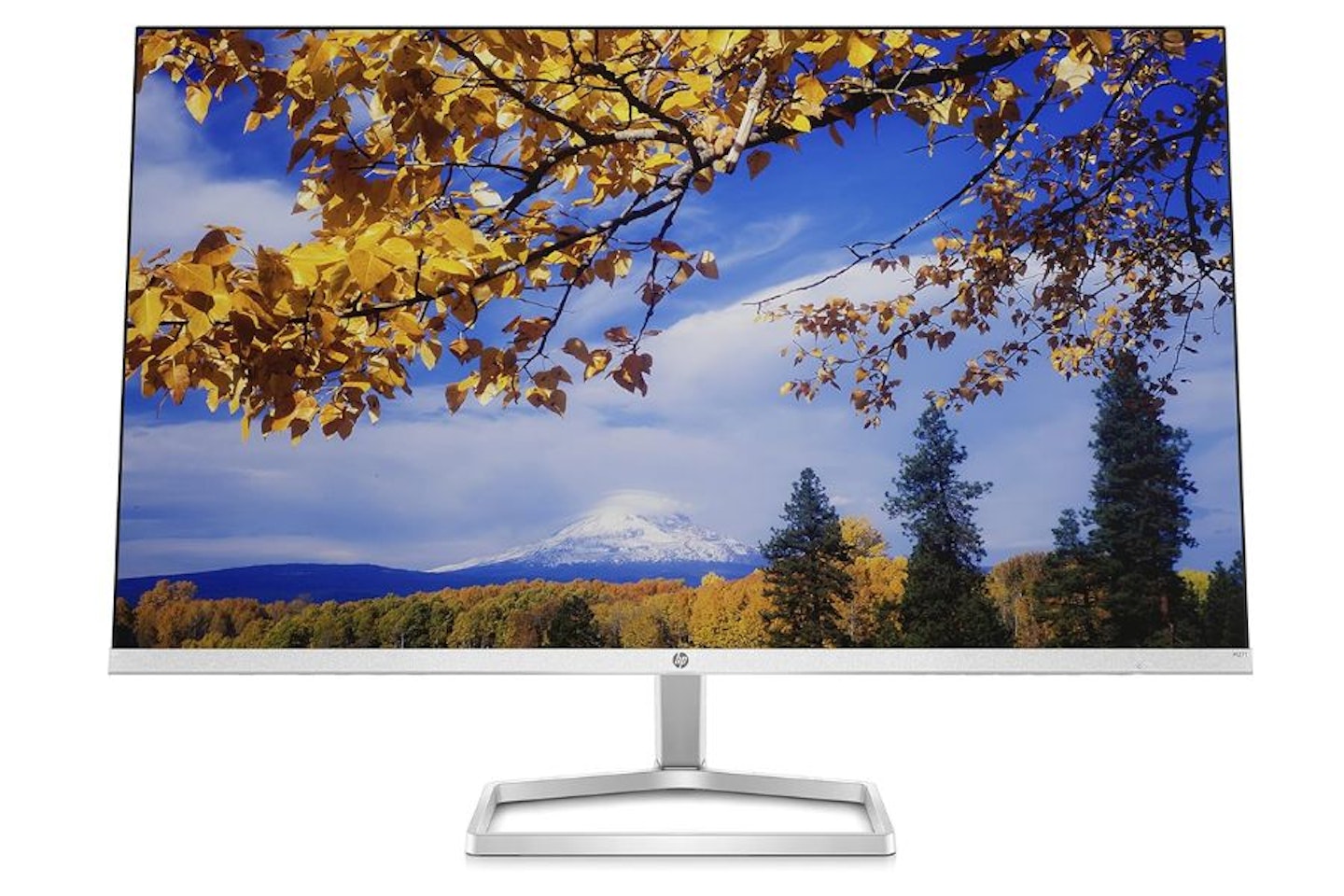For the eco-conscious among us, the best monitor might not necessarily be what performs the best, but the one that's the most eco-friendly. You'll want to find an energy-efficient display, and for that, you'll want to look into EPEAT-certified monitors.
EPEAT is an ecolabel owned by the Global Electronics Council. It registers electronics, awarding them tiers from bronze to gold depending on the number of sustainable criteria that they meet. To attain a silver tier rating, monitors must meet the essential criteria of at least half of the over 40 optional points. Gold tier is only awarded to the best monitors that meet over 75 per cent of these goals. The exact criteria can be found on EPEAT's website, along with the requirements for other devices such as smartphones and TVs.
Choosing environmentally friendly electronics is more important and popular than ever. Brands like ASUS, Dell, HP, and more are all taking steps towards more sustainable products, so you're not limited for choice.
The best eco-friendly monitors at a glance:
• Best overall eco-friendly monitor: Dell P1424H Full HD Portable Monitor - View on Amazon
• Best eco-friendly QHD monitor: AOC Q27P3CV QHD Monitor - View on Amazon
• Best eco-friendly office monitor: Lenovo ThinkVision P24h-2L - View on Amazon
• Best eco-friendly adjustable monitor: Philips 241B7QUPBEB FHD Monitor - View on Amazon
• Best eco-friendly creative monitor: ASUS ProArt PA279CRV 4K Monitor - View on Currys
• Best silver-tier eco-friendly monitor: HP M27f Ultraslim Monitor - View on Amazon
To best understand the strengths of these monitors beyond their eco-friendly rating, you'll need to grasp the key specs to look out for. Resolution refers to the number of pixels that can be displayed at once (usually noted with phrases like 4K or 1440p), the refresh rate is how often they can change, and the response time is the time it takes for colours to change; together, these are easily the most important factors for getting a vibrant screen. Brightness and screen size are self-explanatory, and colour support is the number of compatible colours it can produce. Lastly, the screen type refers to the actual tech behind the screen, often the backlight.
To help you choose the best eco-friendly monitor, we've compiled a list of a few outstanding EPEAT-certified monitors. We've made sure to include budget-friendly options, as well as a variety of designs. Whether it's an adjustable screen or an ultrawide design, you can still get brilliant eco-friendly displays.
We've carefully examined each of these monitors' specs and analysed their strengths and weaknesses, so you can be sure that you'll understand them well before you buy. Regardless, they're all quality, sustainable monitors that help improve your setup's green computing.
The best eco-friendly monitors:
All prices are correct at the time of writing. Prices, stock and deals are subject to change without notice.
Best overall eco-friendly monitor
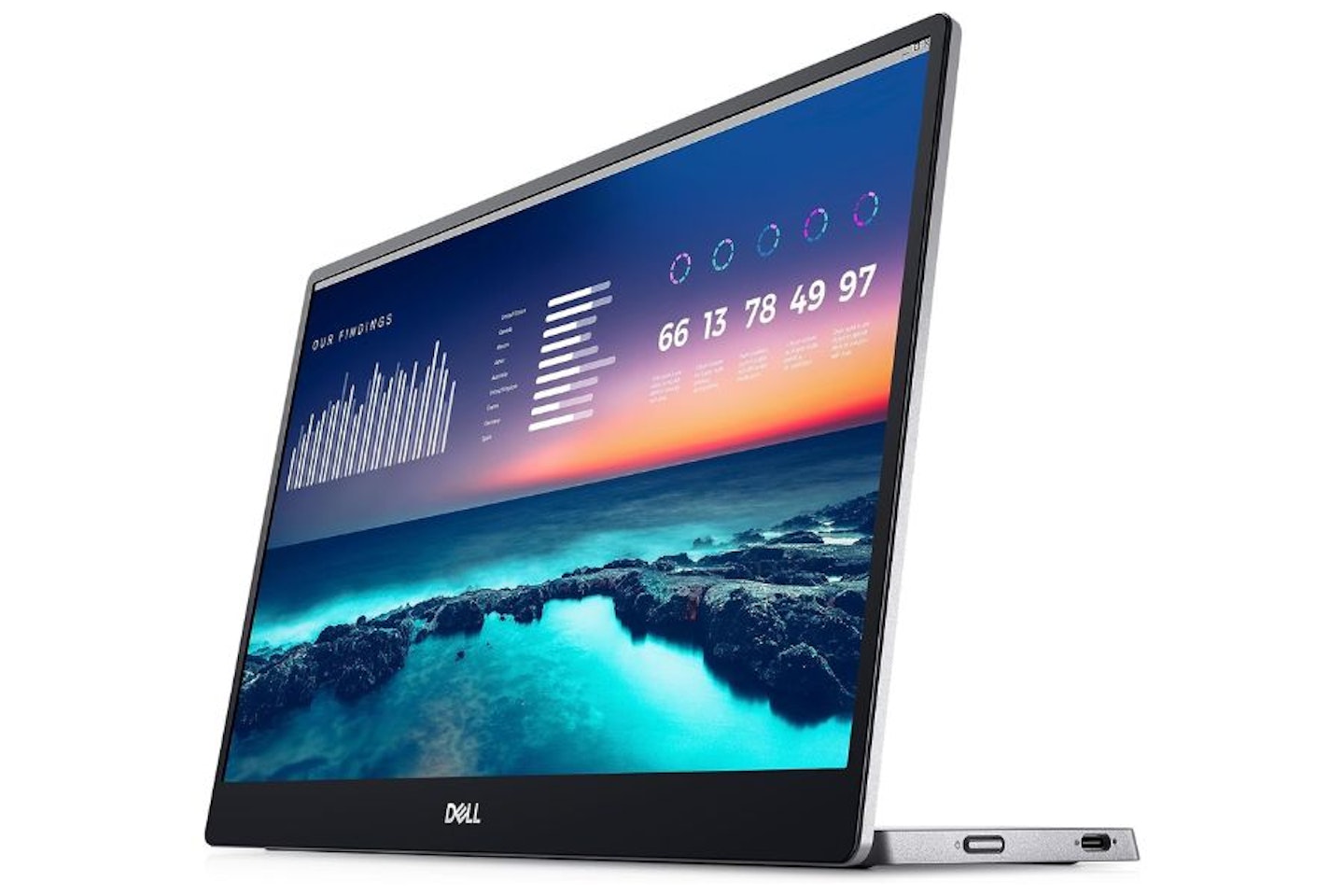 Dell
DellThe Dell P1424H is EPEAT gold tier and has a bit of everything for everyone. The most immediately striking aspect of this monitor is its portable design. This makes it perfect for taking with you on travels or even just as a versatile second monitor. While the LED screen is unfortunately only 14 inches, it's still excellent in its own way, with a respectable 60Hz refresh rate and acceptable 6ms response rate. The colour support and brightness are surprisingly good for this type of monitor.
The Dell P1424H truly shines in terms of energy efficiency. While it relies on battery life, it proudly boasts an energy-efficiency rating of B, putting it far ahead of the competition. It's a low-power consumption monitor with enough versatility to make it suitable for just about any task.
Pros
- Portable design
- Energy efficiency B
- Works well for dual-screen setups
Cons
- Small screen size (14 inch)
| Resolution | 1920 x 1080 |
| Screen size | 14 inches |
| Screen type | LED |
| Refresh rate | 60Hz |
| Response time | 6ms |
| HDR | Unspecified |
| Ports | USB-C x 2 |
| Colour support | 16.7 million |
| Brightness | 300 nits |
| Viewing angle | 178 degrees |
- Customer review: "Dell did a wonderful job. Well worth the money. Great for portable office. Works with my MacBook Air and Dell laptop. Just be aware the USB-C is 100W and Generation 2 for video monitors if you lose the one that came with it."
Best eco-friendly QHD monitor
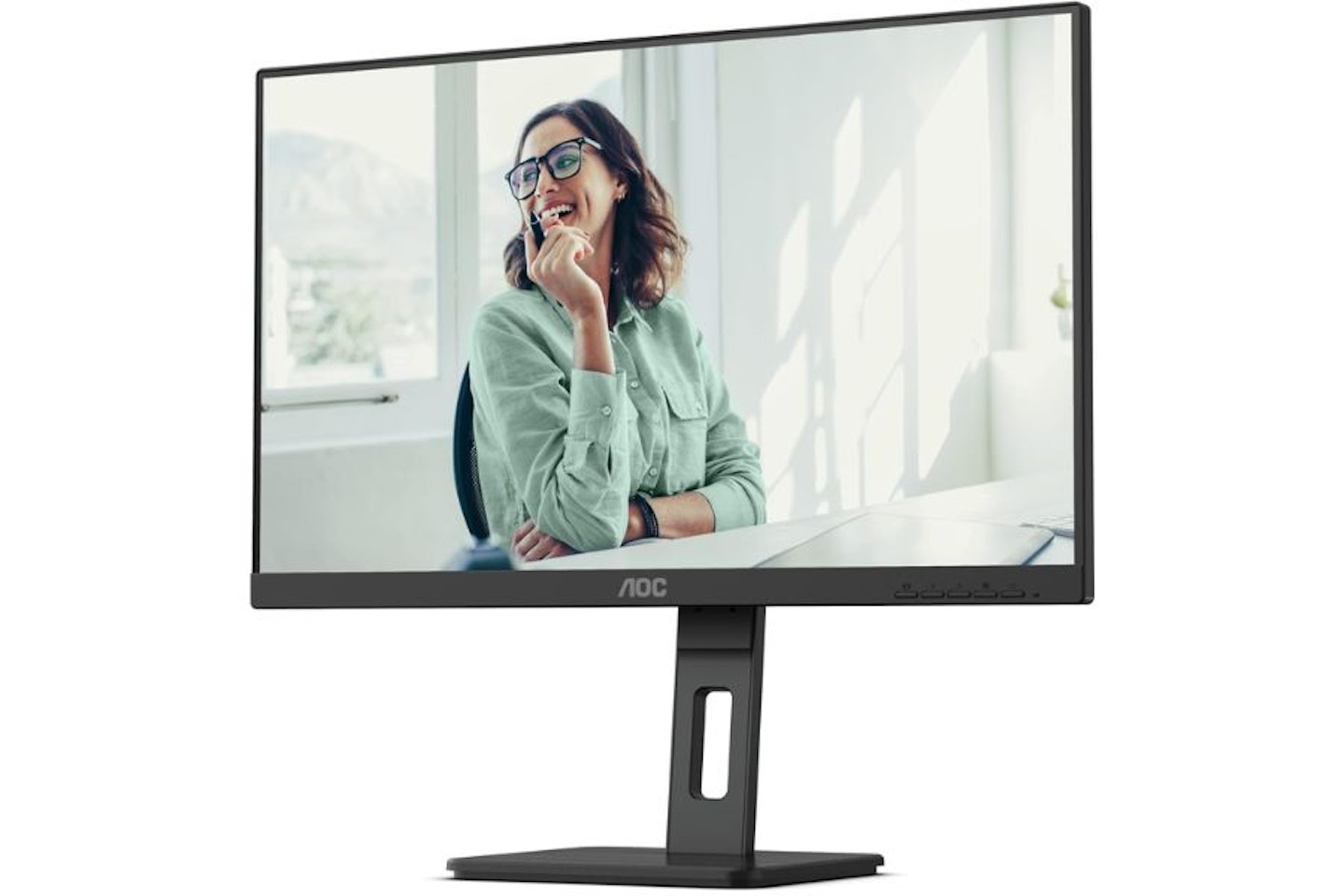 AOC
AOCFor those searching for a great monitor resolution, the AOC Q27P3CV doesn't disappoint. It's QHD, which is more than enough for general use, and the screen specs don't stop there. A refresh rate of 75Hz is great for an eco-friendly monitor, as is a 4ms response time. A brightness of 350 nits is also excellent. The AOC Q27P3CV also has some rather nice features, such as a flicker-free display and low blue light that make it very easy on the eyes. It's EPEAT gold tier and has an energy-efficiency rating of E.
Beyond the screen, we're fond of the USB hub of this monitor. It makes storing and managing cables simple and convenient, helping to keep desk space and devices organised. We're less keen on the speakers, which squeak out 2W of power each.
Pros
- Flicker-free display is kind on the eyes
- USB hub keeps your cables organised
- Low Blue Light feature
Cons
- Built-in speakers are quite weak
| Resolution | 2560 x 1440 (QHD) |
| Screen size | 27 inches |
| Screen type | LED |
| Refresh rate | 75Hz |
| Response time | 4ms |
| HDR | Unspecified |
| Ports | HDMI, DisplayPort, USB-C |
| Colour support | 16.7 million |
| Brightness | 350 nits |
| Viewing angle | 178 degrees |
- Customer review: "The image quality on the AOC Q27P3CV monitor is good and the stand provided is heavy and sturdy. If you are simply looking for a no-frills monitor then this unit ticks the box. The built-speakers, however, are a real let down. "
Best eco-friendly office monitor
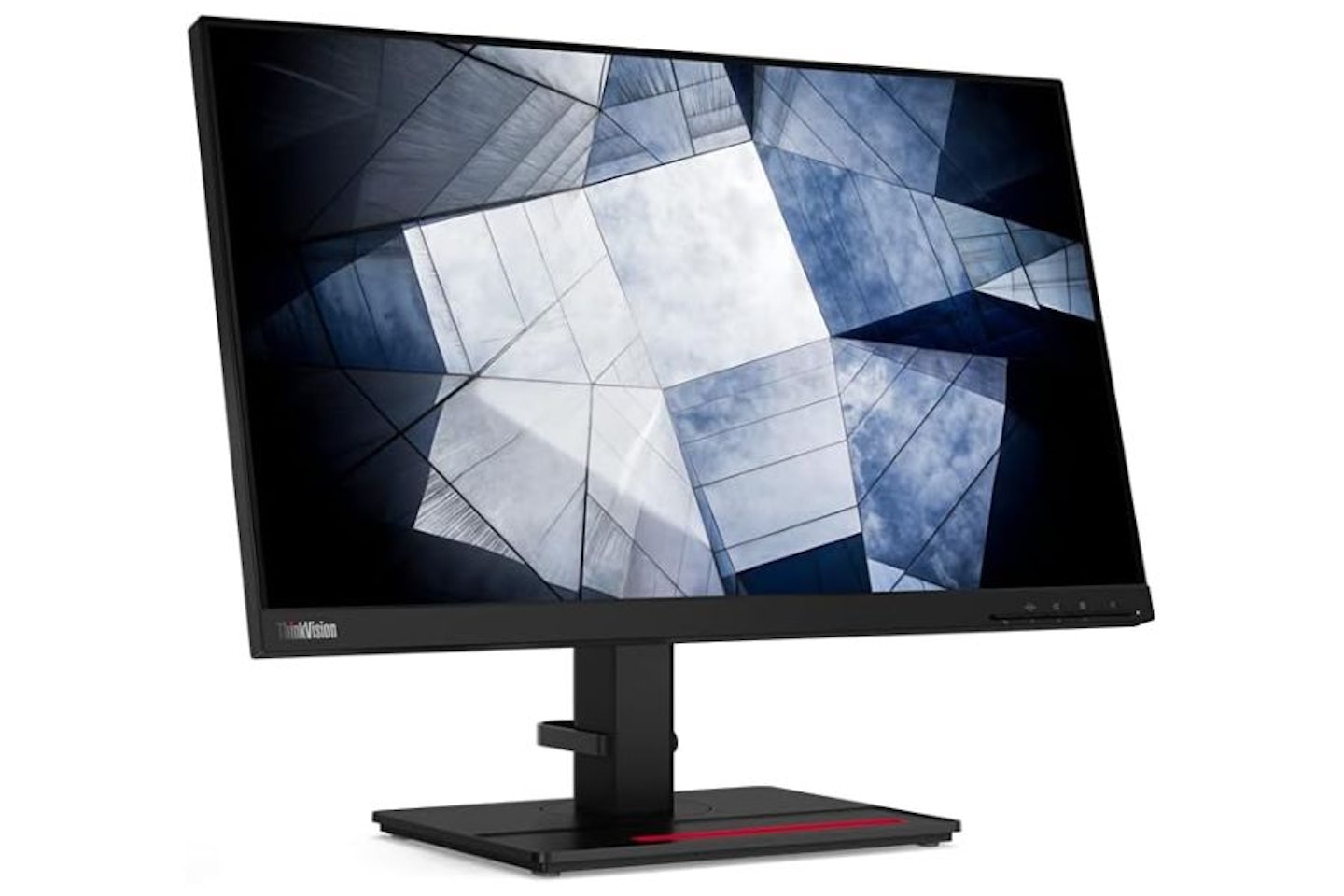 Lenovo
LenovoThe Lenovo ThinkVision P24h-2L is another EPEAT gold tier monitor and a great addition to make an office greener. The 23.8-inch screen size is ideal for working on documents, and the refresh is more than enough for most office work. The brightness is solid, and 16.7 million colour support is always nice to see. However, the 6ms response time is a bit lacklustre.
The ports are where the ThinkVision truly excels. The USB-C ports are ideal for transferring files, making it easy to keep on top of moving around projects. We also quite like the aesthetic design of this monitor, finding it to be the right blend of style without being too bold.
Pros
- USB ports are handy
- Well-suited for office work
- Sleek and stylish design
Cons
- Lacklustre response time
| Resolution | 2560 x 1440 |
| Screen size | 23.8 inches |
| Screen type | LED |
| Refresh rate | 60Hz |
| Response time | 6ms |
| HDR | Unspecified |
| Ports | HDMI, USB-C, Display |
| Colour support | 16.7 million |
| Brightness | 300 nits |
| Viewing angle | 178 degrees |
- Customer review: "It is a bit tricky to adjust basics such as brightness and contrast. However performance is great from such an inexpensive bit of kit."
Best eco-friendly adjustable monitor
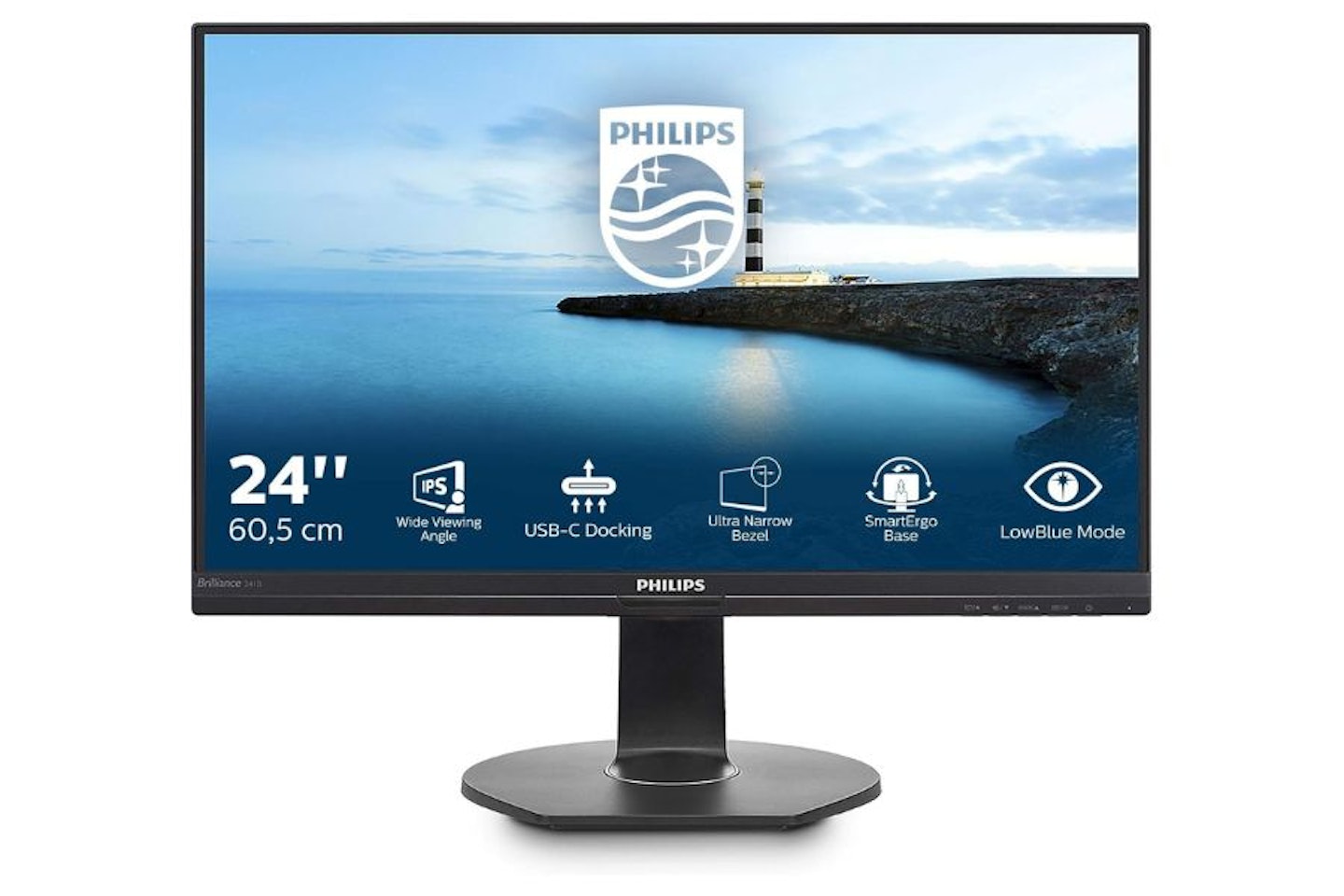 Philips
PhilipsIf you often find yourself shifting around in your seat, you understand the need for an adjustable monitor, and that's why we suggest the Philips 241B7QUPBEB. Regardless of height or angle, you'll be able to find a comfortable position for it. In fact, the screen can even be positioned vertically. Once powered on, the 75Hz refresh rate and 5ms response time greatly provide you with a consistent set of visuals.
At only 250 nits, this monitor falls short of the competition in terms of brightness. That said, that might be a factor in this monitor achieving a score of 36 out of 46 in EPEAT's optional criteria, the highest score out of the monitors on our list. It's also EPEAT gold tier, with an energy-efficiency rating of E. For the eco-conscious, a slightly dimmer display is worth the environmental benefits.
Pros
- Adjustable height and screen can be rotated
- Consistently great refresh rate
- Great option for a second monitor
Cons
- Not as bright as other options
| Resolution | 1920 x 1080 |
| Screen size | 24 inches |
| Screen type | LED |
| Refresh rate | 75Hz |
| Response time | 5ms |
| HDR | Unspecified |
| Ports | HDMI, VGA, DP, USB-C, USB |
| Colour support | 16.7 million |
| Brightness | 250 nits |
| Viewing angle | 178 degrees |
- Customer review: "Good value for money in my view. I use it with both a Windows PC and a MacBook. The only small note I would have concerns the quality of the audio."
Best eco-friendly creative monitor
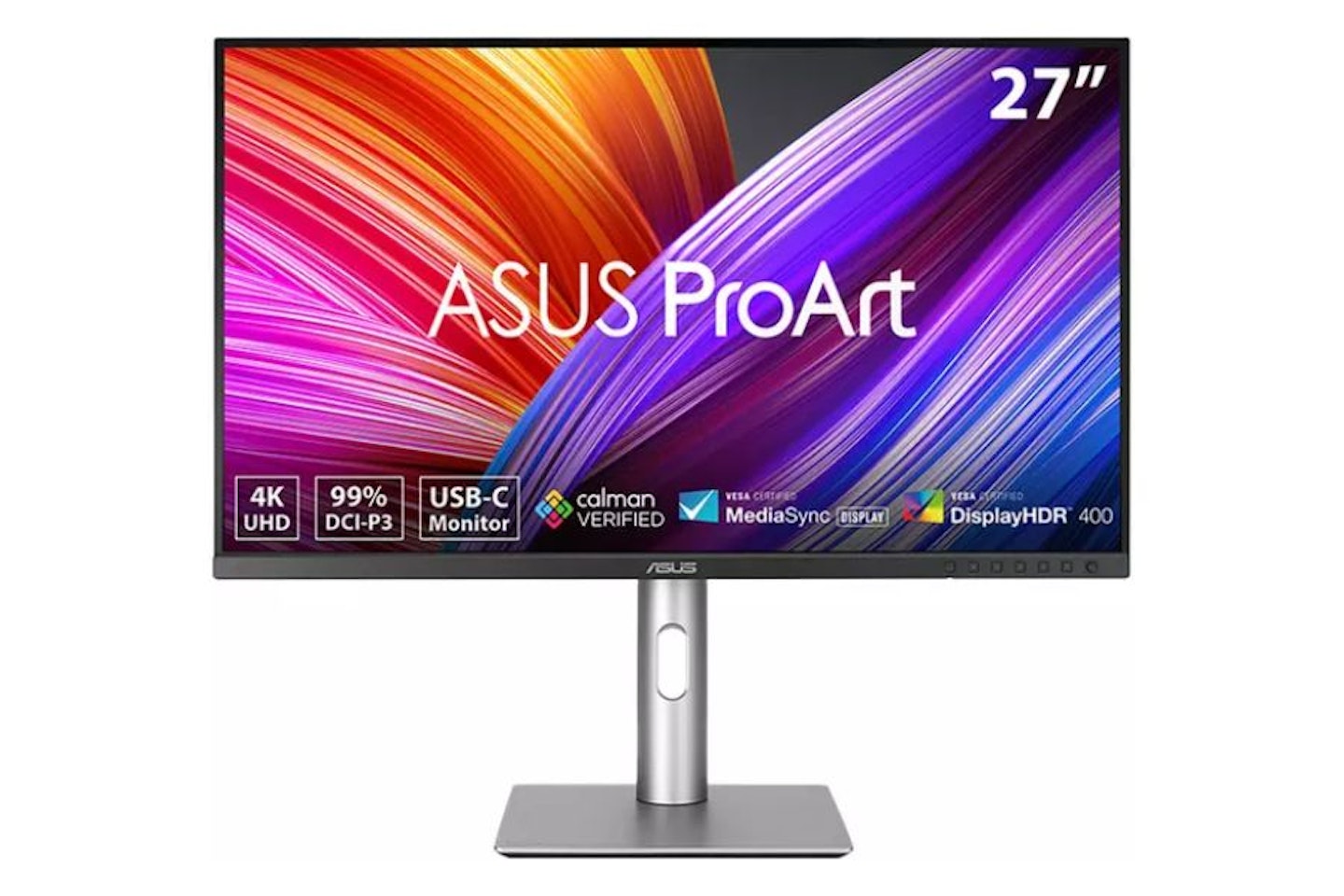 ASUS
ASUSwww.currys.co.uk
Creative programs and applications benefit from great resolutions, which the 4K display of the ASUS ProArt PA279CRV achieves more than the others. It matches the rest of the list, being EPEAT gold tier with an energy-efficiency rating of E. Screen-wise, HDR400 is a nice addition that pairs nicely with the 5ms response time. The port selection is also handy, especially the USB-C port for transferring large files and projects. Of course, the most impressive aspect of this monitor is its 400-nit brightness, easily out-illuminating the competition.
There are a couple of specs that leave us a little disappointed. The 60Hz refresh rate is comparable to others on our list, but it falls short of making the most of the 4K resolution. The colour support is surprising too; 1073.7 million is by no means a limited selection, but we usually expect more from a monitor designed for art.
Pros
- Fantastic 4K resolution
- USB-C port is ideal for transferring files and projects
- Excellent screen brightness
Cons
- Refresh rate is fine, but a little underwhelming compared to the competition
| Resolution | 3840 x 2160 (4K) |
| Screen size | 27 inches |
| Screen type | LED |
| Refresh rate | 60Hz |
| Response time | 5ms |
| HDR | HDR400 |
| Ports | USB 3.2 x 3, USB Type-C x 1, HDMI x 2, DisplayPort x 2 |
| Colour support | 1073.7 million |
| Brightness | 400 nits |
| Viewing angle | 178 degrees |
- Customer review: "The ASUS ProArt stands out as an excellent monitor featuring a superb display. While its build may not be as robust as expected for the price, the 4K display, used seamlessly with an M2 Mac Mini, delivers crisp, balanced, and smooth visuals. Without a doubt, I would recommend it to fellow users."
Best silver-tier eco-friendly monitor
The rest of the monitors on our list are in the EPEAT gold tier, and the HP M27F is only silver. That said, if you're willing to let that slide, you get one mighty monitor for your money. It sits comfortably below £200, which is fantastic considering it's an ultrawide FHD display. The very thin bezels ensure you get the most out of the 27-inch screen, and the 75Hz refresh rate and 5ms response time are more than sufficient for getting a great picture at this price.
In terms of brightness, this HP monitor comes in at 300 nits. That's definitely bright and makes the fact that it has an energy-efficiency class of D all the more impressive. Other features like the integrated cable management blue light filter make it a very convenient and practical pick for those willing to dip into the silver tier.
Pros
- Ultrawide display is nice to look at
- Affordable price point
- Very thin bezels
Cons
- Less eco-friendly than other monitors on this list
| Resolution | 1920 x 1080 (FHD) |
| Screen size | 27 inches |
| Screen type | LCD |
| Refresh rate | 75hz |
| Response time | 5ms |
| HDR | Unspecified |
| Ports | HDMI x 2, VGA |
| Colour support | Unspecified |
| Brightness | 300 nits |
| Viewing angle | 178 degrees |
- Customer review: "Very nice little monitor. Great colors and good sound for such an inexpensive bit of kit very stable with the base provided and the cable management is nice. Good graphics and I like the fact it has such a small bezel."
FAQs
What are the benefits of eco-friendly monitors?
As the name suggests, eco-friendly monitors are more environmentally friendly than standard monitors. Less emissions are produced while making them, and less pollution comes from the packaging. It's not uncommon for parts of the product to be made from recycled materials.
When using an eco-friendly monitor, you reap the benefits of energy-efficient designs. These monitors require less power, meaning less electricity is consumed, which is a blessing for the environment and your bills.
How to choose the right eco-friendly monitor?
Since all of the above monitors share crucial eco-friendly measures, you may still be unsure which to pick. In such a case, we suggest focusing on a few aspects.
Firstly, what purpose do you need the monitor for? If you need a monitor you can take places with you, a portable monitor would be best. On the other hand, if you have a home setup, a curved monitor can be a nice treat, although it is difficult to find curved designs that are also eco-friendly.
You should also consider how important resolution is for you. Artistic and creative works will benefit from 4K displays, as will any monitor mainly used for watching videos. That said, FHD and even just HD displays are still great and provide more than enough detail for many of us. Plus, 1440p monitors are quite budget-friendly.
You should also factor in the size of the screen. It's easy to fall into the trap of thinking bigger is better, but smaller displays mean more desk space.
What other features to look out for?
Whenever you look at any electronics, you should inspect the energy-efficiency label. Ranked by classes of letters, these labels represent how much electricity the item consumes. Ideally, you'll want something class A, but the plausibility of that varies by device. For a fridge, even class E is better than normal. With monitors, most eco-friendly designs are at least E, but some exceptional models may reach as high as B.
You should also pay attention to the materials used. It's increasingly common for electronics to use recycled materials, and this is especially worth looking for when buying a monitor.
Other sustainability tips for monitors?
Even outside of energy-efficiency concerns, it's also handy to inspect how much power a monitor requires. They usually don't require too much, but occasionally one might be hiding a demanding appetite.
Before getting rid of your old monitor, look into whether your local electronic retailers accept them for recycling. Alternatively, your nearest recycling plant may accept them. If your monitor still works, you could consider selling it to become a refurbished monitor.
Speaking of which, if none of the eco-friendly monitors on our list have taken your fancy, consider looking into refurbished options. While it is unlikely that they'll outperform the sustainability of the earlier monitors, you will likely encounter some brilliant deals and discounts.
Kyle Purves is a Commercial Content Writer for What’s The Best, with an avid interest in all things gaming and tech.
They’re well-versed in reviewing a variety of tech products, with a soft spot for speakers and earphones. They’re also no stranger to hunting down the best savings, always wanting to get the best deal possible. Outside of work, they can often be found playing through an RPG, listening to Japanese noise rock, or trying to catch up with their ever-expanding list of shows and anime to watch. If possible, they try to play Dungeons and Dragons a couple of times a week, but getting six adults to be free at the same time is easier said than done.
Subscribe to the What’s The Best Newsletter to keep up to date with more of the latest reviews and recommendations from the rest of the What’s The Best team.

